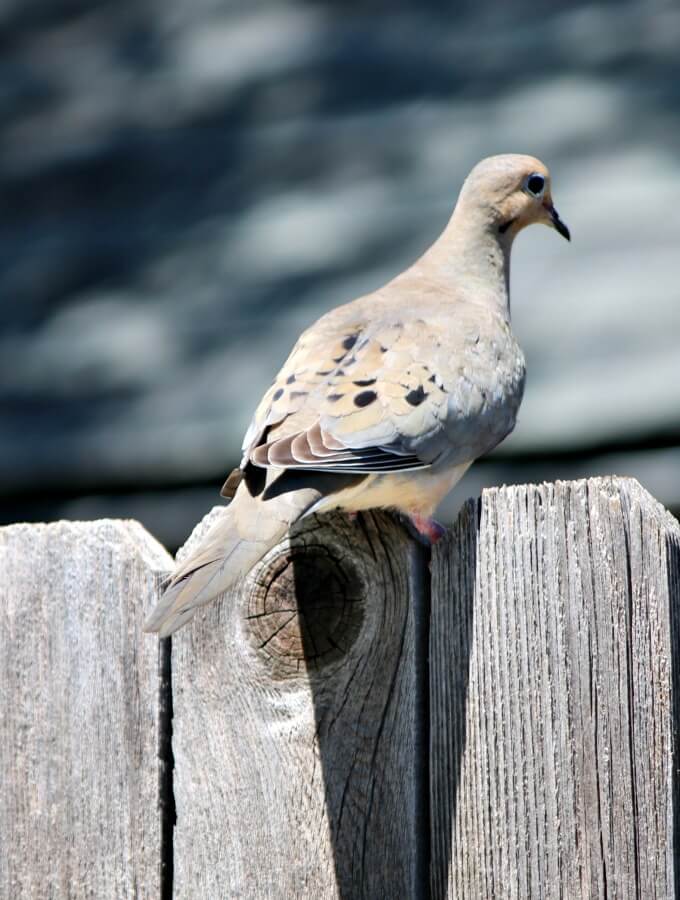


The mourning dove has been timed at a flight speed of 30-55 mph.

The mourning dove’s flight is swift and darting, while the wings make a whistling sound. Legs and feet are dull red or purplish red. At close range, adult males can be distinguished by purple-pink iridescent feathers on the neck and light pink on the breast. The colors of the female are duller than the gray-brown adult males. The mourning dove has a thin, delicate-looking bill, a neat head, and a long, graduated tail bordered with large white spots. A member of the pigeon family, this beautiful bird with a long-pointed tail has probably been seen by everyone in North Carolina. Also known as the Carolina dove, the Soccoro dove and Grayson’s dove, it is the only game bird to nest in all 48 connecting states of the United States. Named for their long tails and melancholy bird call, mourning doves have been classified as a game bird by the federal government and 39 states, including North Carolina. Mourning doves, often seen migrating in large flocks, begin to break up and form pairs. In the early mornings of late January and early February, mourning doves in North Carolina begin cooing and making their circling courtship flights. In North Carolina, the mourning dove can be found statewide. Some cases, however, have noted a life span of five, seven, and 10 years. Adult mourning doves live about two years in the wild. They also range from California to the East Coast. Mourning doves nest from southeast Alaska and southern Canada south to Baja, California through Mexico to Panama. Adult mortality is about 55 percent annually. Sexually mature in the spring following summer birth.ĥ5 to 75 percent of juveniles do not survive first year. Chicks are on their own within a week after leaving nest. Young fly directly from nest 14–15 days after hatching. Incubated by both sexes, male by day, female by night. 2–5 broods in a nesting season, more in the South because of the warm climate some doves may nest every month of the year in the South.Ĭalled squabs. Seeds of grass, waste grain buckwheat, peanuts, cowpeas, seeds of pine, dove weed, pokeberry, some insects and snails. North Carolina Wildlife Resources Commission, 2009.


 0 kommentar(er)
0 kommentar(er)
